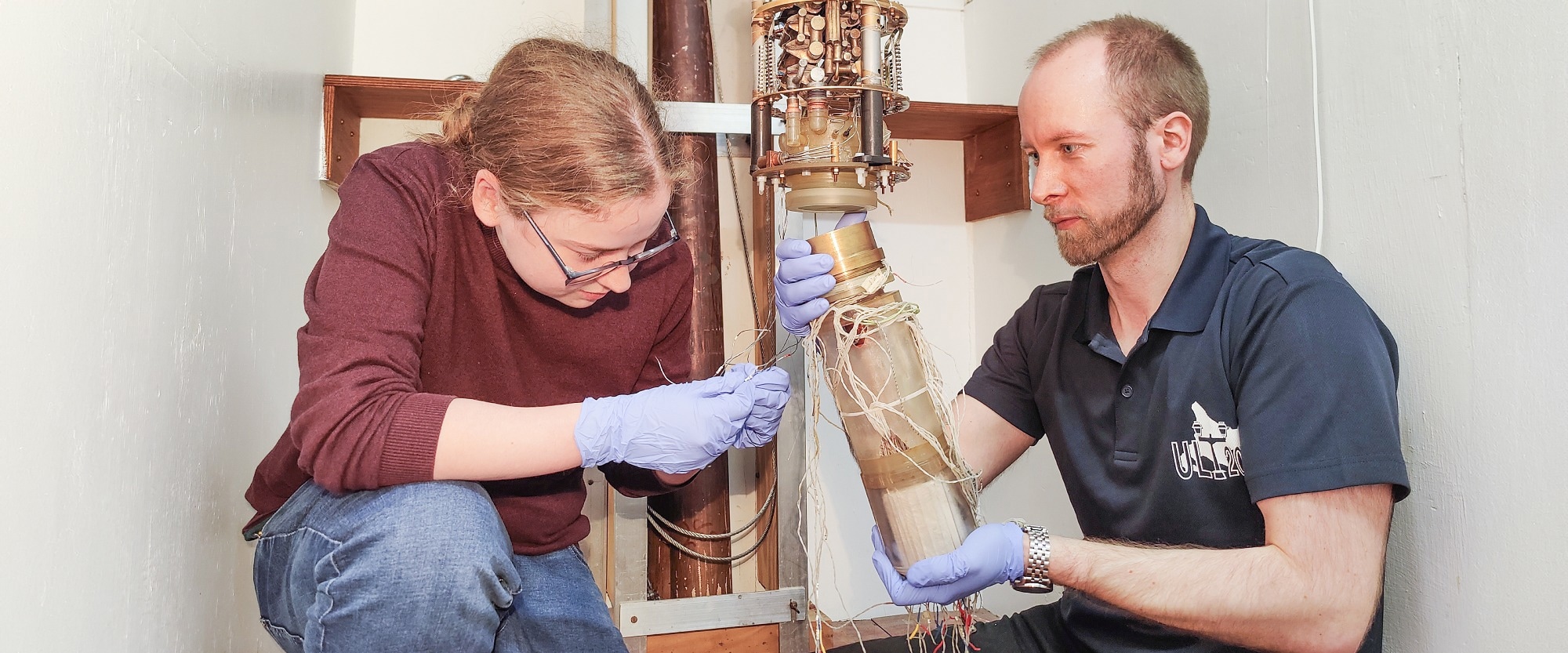In a new interview feature, AZoQuantum speaks with Dr. Samuli Autti about his new research investigating the tactile sensation of superfluid 3He. This research has led to a series of exciting new discoveries in the realm of physics, which we discuss in detail below.
Please could you introduce yourself and your research background?
My name is Samuli Autti. I am an EPSRC Fellow and a Lecturer at Lancaster University in the UK.
What is superfluid 3He, and why does it warrant investigation?
Helium-3 is one of the two stable isotopes of helium. Helium-4 is the stuff that you put in balloons, while helium-3 is rare and can in large quantities only be collected as a side product of the nuclear weapons industry.
Superfluid 3He is a many-particle quantum state that appears if you cool down 3He in a container to about one millikelvin (1000th of a degree above absolute zero). This quantum state comes with conceptual connections to various seemingly distant fields, such as particle physics and cosmology. Many famous physics constructions, such as the Higgs boson, can conceptually be traced back to this system. Due to this versatility, superfluid 3He has been and, as we see here, continues to be where numerous quantum physics ideas first appear and are shown to work.
What initially inspired you to investigate the tactile sensation of superfluid 3He in particular, and why is this question important in the context of quantum physics?
Like so often in blue skies research, we set out to do something that was never realized in the end. The plan was to find out how the bulk superfluid breaks down if you hit it hard with a rod. This is a rather simple but open problem in quantum physics.
It turns out the bulk does not break; it remained passive no matter how hard we tried. Instead, we learned that the probe was only interacting with a very very thin, nearly two-dimensional system that covers the probe. Even more unexpectedly, a closer look revealed that this layer was carrying heat around rather effectively while the bulk played no role in the heat flow. In other words, we now understand how the superfluid would feel like to the touch.
Can you elaborate on the significance of the "quantum well" at the boundaries of the container and its role in the behavior of superfluid 3He?
The quantum well is what creates the two-dimensional superfluid covering walls and probes inserted in the bulk superfluid. This is a region where the superfluid is less well protected from external interactions due to the way that the wall interferes with the quantum state of the superfluid.
Your experiments suggest that the bulk of superfluid 3He behaves like a vacuum. Could this have practical applications in creating new vacuum-like environments for quantum experiments?
It is well known that the bulk behaves like a vacuum, but this was supposed to be limited to rather minor interference, such as very slow motion only. That the isolation is so perfect came as a surprise to not only us but the theory community too. This means there are plenty of follow-up basic research questions, starting from simple ones such as “why we cannot break the bulk vacuum”. In terms of applications, there are people trying to use superfluids (4He) as a perfect passive background for building qubits, for example, but it is too early to predict what consequences our findings may have there.
You discovered that superfluid 3He is thermo-mechanically two-dimensional. How might this redefinition of its basic structure impact our understanding of other quantum systems?
It will take us a large amount of work to truly understand how to answer this question, but generally speaking, superfluid 3He is conceptually connected to so many other fields in physics that we can safely assume some of these links will change how we view basic physics elsewhere.

Image Credit: Michael Thompson (Lancaster University)
You mention that the bulk superfluid is surrounded by an independent two-dimensional superfluid. Could this two-dimensional superfluid have unique properties or applications separate from the bulk superfluid?
It is believed to contain Majorana particles, for example. These are theorized particles with unusual properties that make them useful for applications such as quantum computers. They have remained elusive despite decades of projects aimed at discovering them in various physical systems.
The mechanical resonator used in your experiments is described as the size of a finger. Could smaller or larger resonators provide different insights into the nature of superfluid 3He?
Yes, indeed. For example, small enough resonators can be placed directly inside the 2D superfluid. This would allow direct microscopy of the details of this system. However, the resonators need to be thinner than 100 nanometres and very long, perhaps several millimeters, so we don’t need to kick them very hard to get a large enough signal out. We are trying to fabricate suitable resonators, but this is a very challenging task.
Could you describe some of the challenges faced when working with superfluid 3He at temperatures just a 10000th of a degree above absolute zero?
When I was a child, I remember reacting to Star Wars with skepticism when it came to the idea that the fastest starships were made in someone's garage and contained dodgy devices and installations. This was until I started working in the Low Temperature Laboratory in Finland, working on my Ph.D., where I quickly learned this was exactly how the best cooldown machines were made. That is, to achieve the lowest temperatures, you or someone you work with needs to build the refrigerator. It took me a year just to learn how to confidently operate one. There are so many consecutive cooldown stages that it is astonishing they can all be made to work at the same time, and this, more often than not, leads to a useful experiment.
What are the practical implications of your research for quantum technologies?
Well, the honest answer is who knows. We do basic research because it is fascinating and serves our curiosity, not because applications are readily in sight. However, I already mentioned Majorana fermions. Showing they really exist could have major consequences for quantum technology because of the strange rules these particles obey.
What are the next steps in your research?
We have observed many unexpected features of the superfluid system. This is what experimental physicists dream about: plenty of simple new physics to be explored. Why does the bulk remain totally passive? Can we insert a probe wholly inside the two-dimensional surface superfluid? What will we find there if we do such “microscopy”?
Where can readers find more information?
The research article is available open access here https://www.nature.com/articles/s41467-023-42520-y
About Dr. Samuli Autti
 Samuli Autti is a Lecturer and EPSRC Fellow at Lancaster University in the UK. He completed a Ph.D. in the Low Temperature Laboratory in Finland in 2017, working on superfluid helium-3. Samuli was the receiver of the IUPAP Young Scientist Prize 2020 for a range of superfluid discoveries, and the 2023 Nicholas Kurti Prize for his work on low temperature physics. His present work deals with the interfaces between classical and quantum physics, aiming to answer questions such as “what does it feel like to touch a quantum fluid” and “can we melt a time crystal, and whether the outcome is a time liquid”.
Samuli Autti is a Lecturer and EPSRC Fellow at Lancaster University in the UK. He completed a Ph.D. in the Low Temperature Laboratory in Finland in 2017, working on superfluid helium-3. Samuli was the receiver of the IUPAP Young Scientist Prize 2020 for a range of superfluid discoveries, and the 2023 Nicholas Kurti Prize for his work on low temperature physics. His present work deals with the interfaces between classical and quantum physics, aiming to answer questions such as “what does it feel like to touch a quantum fluid” and “can we melt a time crystal, and whether the outcome is a time liquid”.
Disclaimer: The views expressed here are those of the interviewee and do not necessarily represent the views of AZoM.com Limited (T/A) AZoNetwork, the owner and operator of this website. This disclaimer forms part of the Terms and Conditions of use of this website.